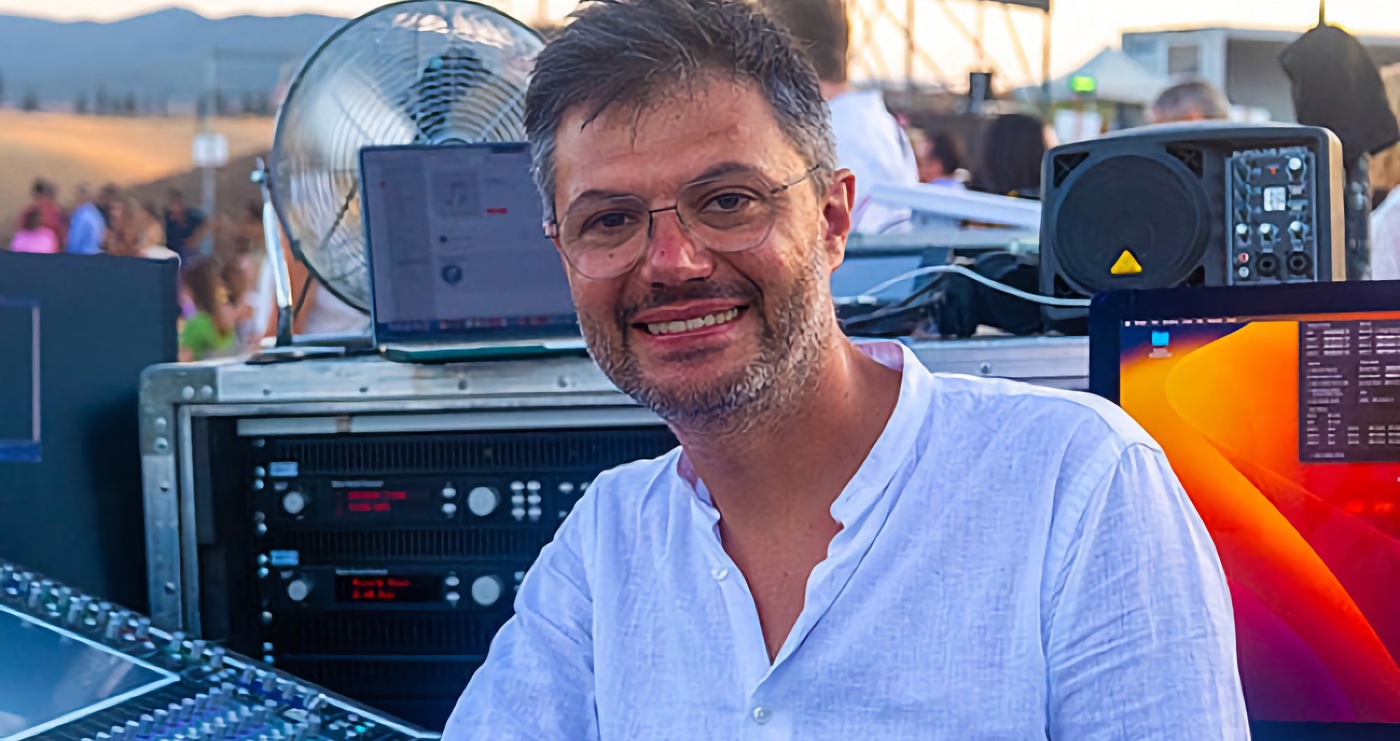Article by Alfio Morelli from Sound&Lite Magazine soundlite.it
From July 15 to 19, a special 19th edition of the Teatro del Silenzio took place, welcoming international guests and top professionals to Tuscany to celebrate Bocelli’s milestone. Starting backstage, we interviewed many of them. After leaving the production office, we headed to the FOH mix position, where we met Davide Lombardi, a professional we deeply admire for his career.
Davide, we last saw you in Rome with Simply Red, and now you’re with Bocelli.
Yes, I’m increasingly involved in Bocelli’s tours. The commitments are numerous, so to cover all events, I’ve created a highly specialized team of technicians who accompany me on every project, with support from local audio services. Here in Lajatico, alongside Stefano and Filippo, we have Mario Bianchi, the stage artist coordinator, and Alessandro Cestaro, who assisted with sound design and serves as the system engineer.
What is your role here?
Beyond mixing, I’m responsible for the event’s entire audio, meaning I design the sound system, plan the monitoring setup, and coordinate with the orchestra, house band, conductor, and all guest performers. For large-scale, filmed events where lights and cameras take priority, the key request is maintaining high-quality audio while meeting the needs of the broadcast, director, and show designers. Agorà, the sound provider, offered top-quality equipment and a fantastic team, led by Filippo Panella, making it a pleasure to work together.
Can you share your technical choices?
At FoH, there are two identical SD7 desks, and two more at the monitor desk. As is common in shows of this scale, one mixer was dedicated to Bocelli and his guests, while the other handled the orchestra. This setup was mirrored at both FoH and the monitor position. For miking Andrea, we chose a headset mic to accommodate his constant movement on stage. After various tests, we opted for the DPA 6066 headset mic capsule, which connects digitally via 32-bit to the DiGiCo SD-Rack and reaches our mixers, all in the digital domain. I make minimal adjustments to Bocelli’s mic—just a bit of reverb using a Bricasti, as the signal is already very clean.
The three PA clusters
The sound engineer’s goal is to deliver the stage sound as transparently as possible to the audience. In the hall, we also make a multichannel backup recording, while the broadcast receives signals directly from the SD-Rack via MADI for post-production.
Can you tell us about the audio system?
The system consists of three towers per side. Two slightly smaller towers on stage are equipped with 8 L-Acoustics K2 plus 2 Kara units, with hidden subwoofers. This choice was due to the uneven hillside and stage design. On the first delay tower, I could push more: 8 L-Acoustics K1, 2 K2, and 8 suspended SB18 subwoofers in cardioid configuration. On the third tower, serving the rear seating, I used 10 L-Acoustics K1, 2 K2, and 8 KS28 subs in a cardioid array. On stage, I placed Syva systems with their bass units, and along the front of the stage, I had to hide Kara speakers for filming needs.
A final word on your predecessor?
It’s an honor to follow in the footsteps of Andrea Taglia, from whom I’ve learned so much. I hold him in the highest esteem and respect, and I want to thank him for all his teachings.

